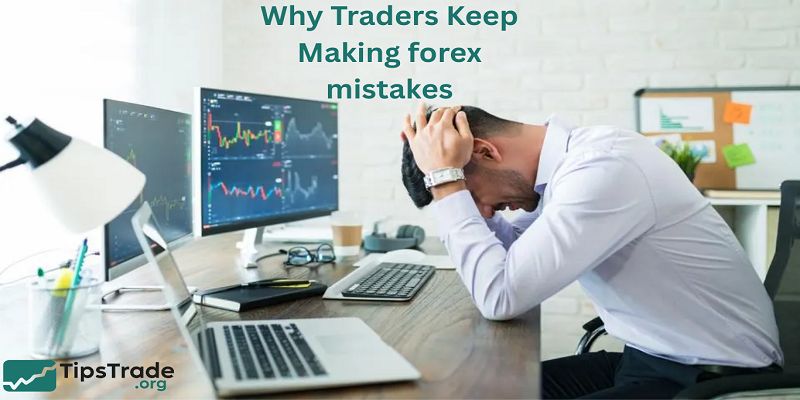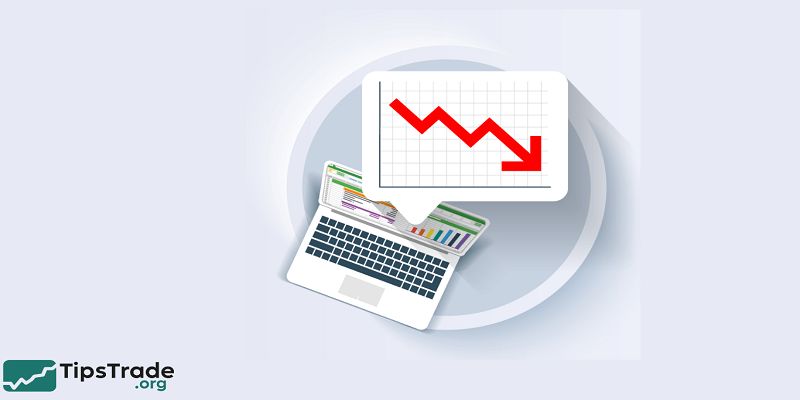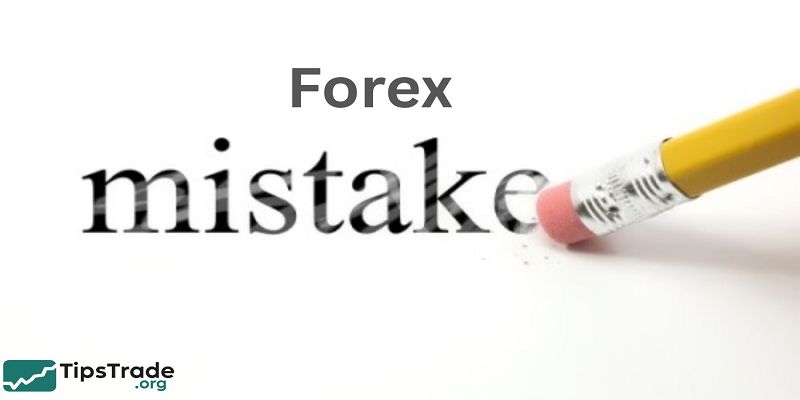Forex mistakes are a major reason why many traders struggle to achieve consistent profits in the currency market. Forex mistakes often include trading without a plan, overleveraging, ignoring stop-loss orders, and emotional decision-making, which can quickly deplete capital and erode confidence. Through this article, let’s explore in detail with tipstrade.org the most common forex mistakes, how to avoid them, and practical tips to become a more disciplined and successful trader.
Why Traders Keep Making forex mistakes

The “Get Rich Quick” Mindset
- Many people enter Forex believing it’s a shortcut to wealth. They see flashy ads, social media screenshots of huge profits, or hear stories of overnight success.
- This mindset pushes traders to risk too much, skip proper research, and chase unrealistic goals.
Lack of Fundamental Knowledge
- Without understanding the basics of trading — such as technical analysis, fundamental analysis, or risk management — beginners are essentially gambling.
- They often misinterpret price movements, misuse indicators, or ignore economic data.
Influence of Broker Advertising
- Brokers often lure beginners with bonuses, high leverage offers, and promises of easy profits.
- While some brokers are legitimate, marketing messages can mislead traders into risky behavior without fully understanding the terms and conditions.
Lack of Discipline and Patience
- Even if a trader has knowledge, without discipline they’ll break their own rules.
- And without patience, they’ll jump into trades that don’t fit their strategy, overtrade, or exit too soon.
>>See more:
- What is Forex? The Complete Guide for Beginners
- What are exchange rates? How to read and analyze rates in Forex
- Top 10 best forex currency pairs to trade in 2025
- Essential Forex Orders every trader must know
- What is forex trading? A detailed guide to forex trading from A – Z
Top 15 Common Forex Mistakes Beginners Make

Mistake 1 – Trading Without a Plan
A trading plan defines your entry and exit rules, risk limits, profit targets, and the conditions under which you trade. Without it, you’re reacting emotionally to the market.
- Consequence: Random trades, inconsistent results, and heavy losses.
- Example: A beginner buys EUR/USD after seeing a sudden spike, but with no exit plan, they hold too long and lose money when the market reverses.
- Solution: Write a plan, backtest it, and stick to it.
Mistake 2 – Overleveraging
Leverage lets you control a larger position with a smaller amount of capital. While tempting, high leverage magnifies losses just as much as profits.
- Why it’s common: New traders think leverage equals faster profits.
- Consequence: A single bad trade can wipe out most of the account.
- Solution: Use modest leverage, calculate position sizes carefully, and risk only what you can afford to lose.
Mistake 3 – Poor Risk Management
Risk management is the backbone of survival in Forex. Ignoring it is financial suicide.
- Rule of thumb: Risk no more than 1–2% of your account on a single trade.
- Common errors: Trading without stop-losses, risking the entire account on one position, or using an unbalanced risk-to-reward ratio.
- Solution: Always set stop-loss orders, aim for at least a 1:2 risk-to-reward ratio, and diversify.
Mistake 4 – Overtrading
Overtrading happens when traders place too many trades in a short period, often driven by greed, boredom, or the urge to recover losses.
- Signs: Multiple trades without solid setups, frequent small losses due to spreads/commissions, emotional exhaustion.
- Solution: Limit the number of trades per day/week, only trade setups that meet your criteria, and take breaks when needed.
Mistake 5 – Chasing the Market
“FOMO trading” (Fear of Missing Out) makes beginners jump into trades after the move has already happened.
- Consequence: Entering at poor prices, high risk for low reward.
- Example: Entering a long trade after EUR/USD has already rallied 200 pips in a day.
- Solution: Plan entries in advance, wait for retracements or pullbacks, and accept that you will miss some moves.
Mistake 6 – Ignoring Economic News
Major news events like NFP (Non-Farm Payroll), CPI (inflation), or interest rate decisions can move markets by hundreds of pips.
- Consequence: Opening positions just before news releases often leads to slippage, whipsaws, or large stop-outs.
- Solution: Always check an economic calendar before trading. Avoid major announcements unless you specifically trade news.
Mistake 7 – Letting Emotions Control Trades
Fear, greed, frustration, and revenge trading destroy more accounts than poor strategies.
- Consequence: Cutting winners too early, letting losers run, doubling down after a loss.
- Solution: Stick to your plan, use stop-losses, set daily loss limits, and practice mindfulness or journaling to manage emotions.
Mistake 8 – Lack of Education and Practice
Trading without understanding chart patterns, indicators, or market fundamentals is guesswork.
- Error: Skipping demo trading and jumping straight into live accounts.
- Solution: Practice on a demo account, study technical/fundamental analysis, and invest in continuous education.
Mistake 9 – No Trading Journal
A journal helps you identify patterns in your behavior and refine your strategy.
- What to record: Entry/exit points, reasons for the trade, market conditions, outcome, and your emotional state.
- Benefit: Over time, you’ll see what works, what doesn’t, and where you repeat mistakes.
Mistake 10 – Unrealistic Expectations
Believing you can turn $100 into $10,000 overnight is a dangerous mindset.
- Consequence: Taking excessive risks, burning out, quitting too soon.
- Solution: Aim for consistent, realistic returns. Treat Forex like a business, not a lottery ticket.
Mistake 11 – Blindly Following Others
Copying trades from influencers, forums, or signals without understanding the reasoning is risky.
- Consequence: Mismatched strategies, reliance on others, and lack of growth.
- Solution: Use signals as reference, but develop your own strategy that suits your risk tolerance and style.
Mistake 12 – Ignoring Trading Costs
Every trade comes with costs: spreads, commissions, and overnight swap fees.
- Consequence: Frequent small trades with high costs eat into profits.
- Solution: Choose brokers with transparent fees, understand swap charges, and avoid overtrading.
Mistake 13 – Using Too Many Indicators
More indicators don’t equal better trading. Overloading charts leads to confusion.
- Error: Believing in a “magic indicator” that predicts every move.
- Solution: Keep it simple — use 2–3 tools that complement each other (e.g., moving averages + RSI + support/resistance).
Mistake 14 – Not Adapting to Market Conditions
Markets change between trends and ranges. A strategy that works in one condition may fail in another.
- Example: Breakout strategies fail in ranging markets, while mean-reversion strategies fail in strong trends.
- Solution: First identify market conditions, then apply the right strategy. Be flexible and ready to adjust.
Mistake 15 – Neglecting Capital Risk
Trading with money you cannot afford to lose creates unnecessary pressure.
- Consequence: Emotional decision-making, overtrading, and panic.
- Solution: Only trade with disposable income, keep emergency savings separate, and decide in advance the maximum capital you’re willing to risk.
How to Avoid These Forex Mistakes – Practical Solutions
- Create a personal trading plan: Define clear entry/exit rules, risk per trade, lot size, and instruments.
- Master risk management: Stick to the 1–2% rule, use stop-losses, and maintain favorable risk-to-reward ratios.
- Develop healthy trading habits: Avoid overtrading, keep a journal, and evaluate your performance weekly.
- Commit to continuous learning: Study charts, follow economic events, and refine your system.
- Strengthen your mindset: Focus on discipline, patience, and long-term consistency.
Case Studies – Lessons from Real Traders

Case 1 – Overleveraging Disaster
- A beginner deposits $500 and uses 1:200 leverage to open a $100,000 position.
- A 50-pip move against them wipes out their account.
Lesson: Always calculate position size based on risk tolerance, not on maximum leverage offered.
Case 2 – Risk Management Success
- Another trader risks only 1% per trade and records every trade in a journal. Even after 5 losing trades in a row, their account remains intact.
- Over time, small consistent gains compound into significant growth.
Lesson: Proper risk management is the key to survival and growth.
Advanced Mistakes Even Experienced Traders Make
- Overconfidence Bias: After a winning streak, traders take unnecessary risks and forget discipline.
- Lack of Diversification: Putting all capital into a single pair or strategy increases vulnerability.
- Scaling Up Too Fast: Increasing lot sizes aggressively after profits often backfires when the inevitable losing streak comes.
Expert Tips to Improve Your Forex Journey

- Professional advice: Trade like a business, not a hobby. Always ask: “Why am I entering this trade?”
- Useful tools:
- Economic calendar (for news events)
- Position size calculator
- Backtesting software - Mindset: Treat Forex as a marathon, not a sprint. Focus on consistency, discipline, and risk control.
Conclusion
Forex mistakes are inevitable in trading, but repeating them is not. By identifying the 15 common mistakes outlined in this guide and applying practical solutions, you can save money, reduce stress, and accelerate your trading progress.

